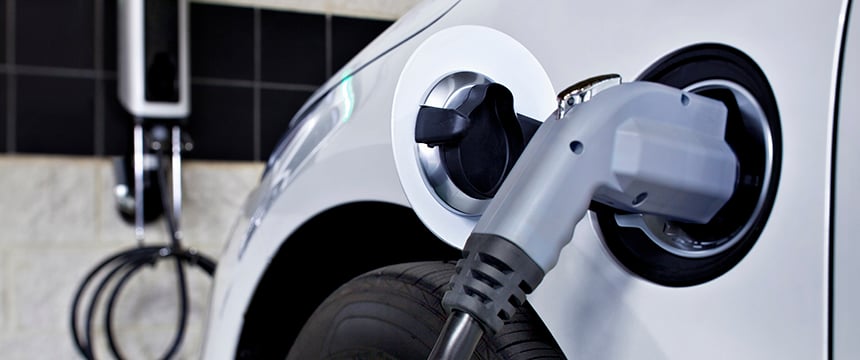As EV Adoption Rises, EV Infrastructure May Be Approaching Its Inflection Point

In spite of the recent uncertainty over whether the Build Back Better Act will become law in any form resembling that passed by the House in Fall 2021, electric vehicle (“EV”) charging infrastructure may still be on the cusp of a dramatic inflection point.
Beginning with the Biden Administration’s August 2021 Executive Order on Strengthening American Leadership in Clean Cars and Trucks, and continuing with the Infrastructure Investment and Jobs Act passed in November 2021 and culminating with the EPA’s new emissions rules published at the end of December 2021, the federal government has implemented an assortment of carrots and sticks meant to stimulate adoption of EVs and the charging infrastructure necessary for widespread public adoption. In addition, public and private industry groups have begun to collaborate to expand the needed infrastructure.
The Executive Order kicked off the EPA rule-making process for new emissions standards for cars and light-duty trucks. The Infrastructure Investment and Jobs Act includes $7.5 billion allocated to invest in a national network of EV charging infrastructure. How that will be deployed at the state and local levels is not yet finalized. As we highlighted in our December 29, 2021 post, the EPA greenhouse gas rules’ cumulative effects are expected to lead to significant increases in EV car adoption, in turn requiring an increase in the EV infrastructure to support them.
In addition to federal government action, a national network of energy utilities organized through the Edison Electric Institutes National Electric Highway Coalition (“NEHC”) have declared their intentions to begin immediately to expand EV charging infrastructure. According to the NEHC fact sheet, the NEHC has 53 member utilities with service territories spanning the country and covering most major US travel corridors.
The NEHC utilities have agreed to work to establish foundational EV fast charging networks across their service territories. NEHC also cites the major uptick in EV sales that are anticipated through 2030, estimating that nearly 22 million EVs will be in use by 2030 that will require upwards of 100,000 DC fast-charging stations (representing more than 10 times the number of current fast-charging stations available).
All of these developments together signal immense investments in EV infrastructure to come, and capital is already organizing in order to take advantage of these opportunities. EV infrastructure will come in the form of the vehicle charging equipment, installed in “stations” at homes, businesses and stand-alone service stations (including potentially integrating with conventional gas stations). In urban areas, the combination of EV charging infrastructure with utilization of public funding sources or public rights-of-way can be layered with local and federal compliance issues that we have encountered while advising on the siting of bikeshare stations1.
Additional expansion and rehabilitation of the electric grid infrastructure necessary to sustain the increased electricity demand from all of these EVs will also be a critical precondition to facilitating the necessary growth in EV infrastructure. This grid infrastructure includes generation, transmission and smart grid technologies as grid operators require greater control over the increased load on the system. Of particular interest to renewable energy developers, there will be increased demand for clean energy to charge all of these new EVs. As more and more EV manufacturers deploy electric vehicles of all types, they are backing them up with plans to develop their own charging networks and power them by 100% renewable energy, as is the case with Rivian’s planned Adventure Network.
EVs are poised to significantly transform our grid infrastructure, and myriad issues will continue to arise as these efforts accelerate. The Foley team has significant experience, knowledge and expertise related to each element of this transformation, including issues related to the automotive, manufacturing, supply chain, regulatory, IP, private equity, tax equity, project finance, or public-private financing issues and we are ready to help clients navigate this new landscape.
1 Examples include: (1) Electrical power source usually cannot be the streetlight infrastructure; (2) federal funding may require archaeological surveys for buried remains and authorization to locate on a 20 or 50 year basis; (3) advertising may be allowed on the charging infrastructure, which could provide additional revenue streams; and (4) municipalities may have rules on union workforce for installing the applicable infrastructure. There are also equity issues revolving around whether charging is available or accessible to the public at large, and not just restricted to where high income brackets park and use their vehicles.

